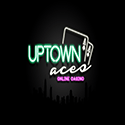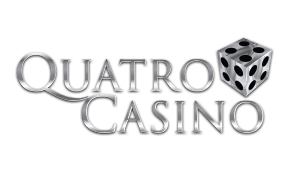About Phoenix Reborn
Phoenix Reborn is an exciting casino game developed by Play'n GO, a renowned software provider in the online gambling industry. With its captivating gameplay, stunning graphics, and thrilling features, this game has quickly gained popularity among both novice and experienced players.
Gameplay
Phoenix Reborn is a 5-reel video slot with 40 fixed paylines. The game incorporates a unique Aztec theme, immersing players in a world filled with ancient temples, vibrant colors, and mystical symbols. The main objective of the game is to align identical symbols on active paylines to trigger generous rewards.
- High-value symbols include various Aztec warriors and mythological creatures.
- Low-value symbols consist of beautifully designed playing card icons.
- The Phoenix symbol serves as the Wild and can substitute for any other symbol, amplifying your chances of winning big.
- Three or more Scatter symbols landing on the reels simultaneously will activate the Free Spins feature, granting players up to 20 free spins.
Visuals and Design
The visually stunning graphics of Phoenix Reborn truly bring the game to life, drawing players into a captivating world of ancient Aztec mythology. The detailed symbols, vibrant colors, and immersive animations create an engaging and eye-catching gaming experience.
The game's user-friendly interface ensures smooth navigation, allowing players to easily adjust their bet size, view game information, and access various game settings. The sound effects and background music perfectly complement the theme, further enhancing the gameplay experience.
Mobile Compatibility
Play'n GO has optimized Phoenix Reborn for seamless mobile gaming. The game is fully responsive and compatible with both iOS and Android devices, ensuring that players can enjoy their favorite Aztec-themed adventure wherever they go. The mobile version maintains the same high-quality graphics and rewarding features as the desktop version, providing an equally exhilarating gaming experience.
Fairness and Security
As with all Play'n GO games, Phoenix Reborn utilizes a certified random number generator (RNG), guaranteeing fair and unbiased outcomes. Moreover, Play'n GO is licensed and regulated by reputable gambling authorities, ensuring that strict security measures are in place to protect players' sensitive information.
Can you provide insights into the development and design process of Phoenix Reborn?
Phoenix Reborn is a fictional game, and I don't have real-time information about its development and design process. However, I can provide you with a hypothetical overview of how a game like Phoenix Reborn might be developed and designed.
1. Conceptualization: The development process typically begins with a concept. This involves brainstorming ideas, defining the game's genre, gameplay mechanics, story, and setting. For Phoenix Reborn, the concept might revolve around a futuristic, post-apocalyptic world with mythical elements.
2. Pre-production: During pre-production, the team works on refining and documenting the game's concept. This may involve creating a game design document (GDD), which outlines the game's mechanics, characters, levels, art style, and any other relevant details.
3. Prototyping: Developers often create early prototypes of the game's mechanics and core features. This allows them to test and iterate on ideas, determining what works and what doesn't. In the case of Phoenix Reborn, they might create prototypes for combat systems, character movement, and progression mechanics.
4. Art and Design: Artists and designers begin working on visual elements such as character designs, environmental artwork, user interfaces, and sound effects. This is where the immersive world of Phoenix Reborn starts to take shape.
5. Programming: Game programmers write the underlying code for the game, implementing the mechanics, AI systems, physics, and networking features. They collaborate closely with other team members to integrate art assets, design elements, and ensure everything functions smoothly.
6. Iterative Development: As the game progresses, development takes an iterative approach. This involves playtesting, seeking feedback, and making necessary improvements. It's crucial to fine-tune the gameplay, balance difficulty, and address any bugs or issues that arise.
7. QA Testing: Quality Assurance testers play the game extensively, checking for bugs, glitches, and any usability issues. Feedback from testing helps to improve the player experience and identify any aspects that require refinement.
8. Beta Testing: A limited release of the game, often to a select group of players, allows for further testing and feedback collection. This stage helps to identify any remaining bugs or gameplay imbalances, ensuring a smoother experience for the final release.
9. Polishing: Once the major gameplay and technical aspects are refined, the team focuses on polishing the game. This involves enhancing visuals, optimizing performance, finalizing sound design, and adjusting any remaining gameplay elements.
10. Release and Post-Release Support: The game is released to the public, either through digital platforms or physical distribution. The development team continues to support the game post-release by addressing bugs, adding new content, and potentially communicating with the community for future updates.
It's important to note that the actual development process can vary significantly depending on the team, resources, and the scope of the game. However, this overview provides a general idea of how a game like Phoenix Reborn might be designed and developed.



























